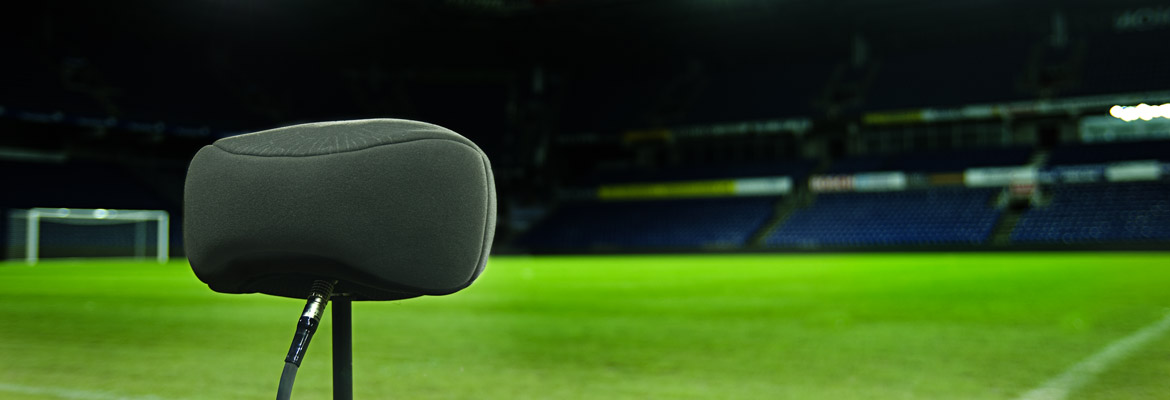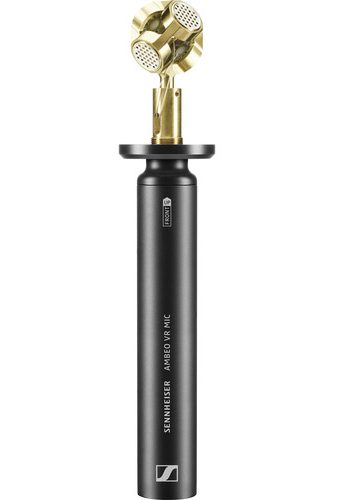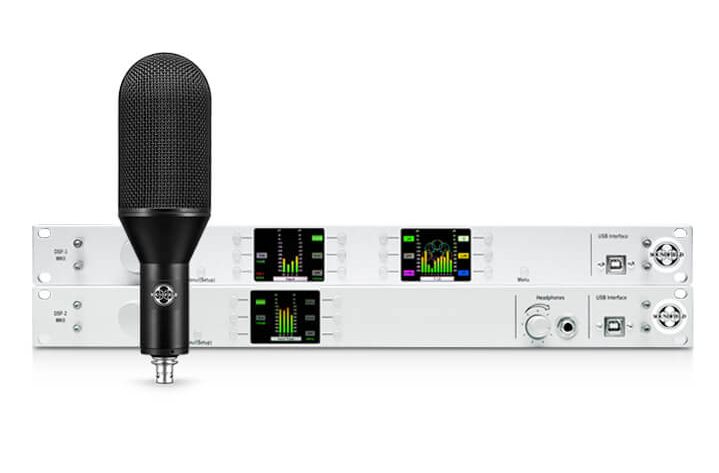Tech Focus: Immersive Audio, Part 3 — Multichannel Mics Take Their Place in Sports Broadcasting
Mobility, flexibility are key features of the leading surround microphones
Story Highlights
Once near novelties, dedicated surround microphones are increasingly common in the sports-broadcasting toolkit, as 5.1 has become the native audio format for television networks. Soccer in particular, with its expansive pitch to cover, has been a major target of this category of multi-transducer mic. As the immersive-audio era edges closer, surround microphones will be seen as well as heard on sports broadcasts. Here are some of the leading examples.
Click here for Tech Focus: Immersive Audio, Part 1 — Waiting Out the Pandemic
Click here for Tech Focus: Immersive Audio, Part 2 — Consoles Shift Toward Software-Based Solutions
DPA
The 5100 mobile surround microphone is a completely self-contained plug-and-play solution for 5.1 audio capture. Lightweight and portable, it can be flexibly mounted: on a stand, suspended from the ceiling, or in a handgrip. It’s also robust and can withstand challenging weather conditions. The 5100 uses five miniature pressure transducers, all with low sensitivity to wind and mechanical noise, low distortion, and exceptional low-frequency response, as well as a substantial dynamic range. The three front capsules in this system are time-aligned to eliminate comb filtering, which also ensures frequency consistency in downmixing to stereo or mono. The rear capsules are nested in the advanced separation chambers and spaced optimally from both each other and the front array to simulate natural time-arrival differences. The result of DPA’s design approach is a surround atmosphere that offers a high degree of coherence, channel separation, and localization accuracy. The 5100 mobile surround microphone requires no external signal processing.
The DPA 4560 CORE binaural headset microphone is a stereo pair of 4060 CORE miniature omnidirectional microphones mounted on the ear hooks of an ergonomically designed headset, designed to create immersive, 3D stereo sound experiences. The omnidirectional pattern also makes it less sensitive to handling, wind, and pop noise. Based on the Head-Related Transfer Function principle and using closely matched transducers, the 4560 replicates the aural perceptivity of the human ear as close to perfectly as possible.
Sennheiser
Designed specifically for 360° spatial audio recording, Sennheiser’s AMBEO VR mic is an ambisonic microphone fitted with four matched KE 14 capsules in a tetrahedral arrangement. This special design allows capture of surrounding sound from one single point. As a result, fully spherical ambisonics sound matches VR video/spherical 360 content. The capsules of the Sennheiser AMBEO VR mic deliver A-format, a raw four-channel output that has to be converted into a new set of four channels, the Ambisonics B-format. This is done by the specifically designed Sennheiser AMBEO A-B converter plugin, which is available as free download for VST, AU, and AAX format for a preferred digital audio workstation for both PC and Mac. B-format is a W, X, Y, Z representation of the sound field around the microphone (W being the sum of all four capsules and X, Y, and Z virtual bidirectional microphone patterns: respectively, front/back, left/right, and up/down). Thus, the listener can audition any direction from the microphone during playback of Ambisonics B.
Soundfield
The Soundfield DSF-B fully digital ambisonic product system for broadcast comprises a DSF-2 MKII microphone for exceptional sound capture, the DSF-2 MKII microphone controller, and the DSF-3 MKII digital surround processor. The system provides simultaneous mono, stereo, and digital surround soundscapes for large-scale live outside broadcasts, such as in sports stadiums and concert halls, creating a completely digital surround-sound production chain. Surround formats supported include conventional 5.1, as well as object-based formats that have additional height channels.



